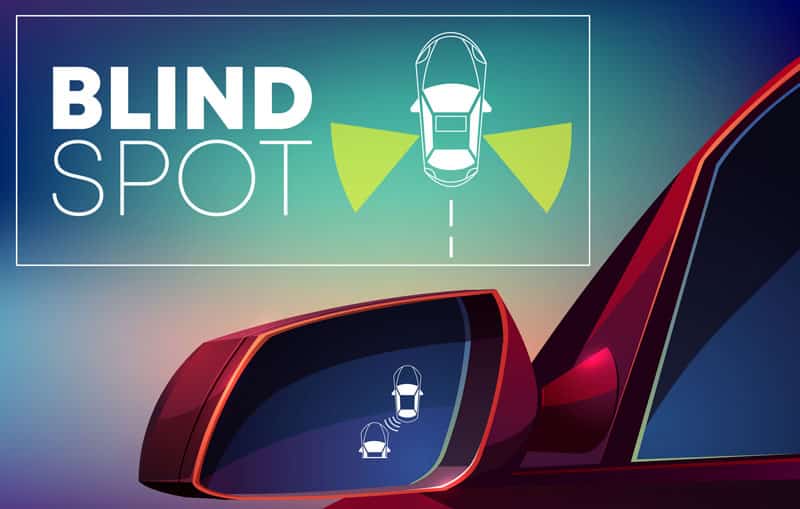What Are Driving Blind Spots & How To Overcome Them

Failing to check your blind spot can cause you to immediately fail your driving test, and this can also put you in a dangerous situation when you’re learning to drive. But what is a blind spot, and how can you deal with it? Find out with these safety tips from LTrent Driving School.
What Is A Blind Spot In Driving?
A blind spot is an area to the side of your car that you can’t see in your rear mirror or side mirror, or in your peripheral vision. Blind spots are areas around your car that are not visible through your regular front or rear-view mirrors. In most vehicles, blind spots are found:
- To the left and right rear quarters of the vehicle.
- Just behind the rear window pillars.
- These areas can hide other vehicles, motorcycles, cyclists, or pedestrians, making it imperative to check them manually by turning your head.
For example, if you’re in the middle of a three-lane road, you won’t be able to see cars that are located on the left and right sides of the road, and are about a half of a car-length behind you. Usually, your mirrors will be set up to show cars that are further behind you.
However, this doesn’t mean you can’t see cars in blind spots at all – just that they can’t be seen with mirrors alone. You’ll just need to do a “head check,” and physically turn your head and neck to look over your right or left shoulder before you switch lanes, make a turn, or perform any other driving manoeuvre.
Blind Spots in the Driving Test
During your driving test, examiners will assess your ability to identify and manage blind spots effectively. Here are some key points they will look for:
- Mirror Usage: Regular use of your mirrors to stay aware of your surroundings.
- Shoulder Checks: Performing shoulder checks before changing lanes, merging, or turning.
- Lane Changes: Ensuring safe lane changes by checking blind spots and using signals appropriately.
- Merging: Smooth and safe merging into traffic, with proper blind spot checks.
How Can I Overcome Blind Spots?
Here are a few tips to help you overcome blind spots and stay safe on the road.
- Do head checks when you stop & change lanes – Always do a head check and look over your shoulder when you arrive at stop signs and red lights, and when you change lanes. This helps ensure you check your blind spot frequently.
- Use your rear view mirror and side mirrors – Before you make any road manoeuvre, check your rear view mirror, your left side mirror, and right side mirror. This is a good step to take in addition to a head check, even though you can’t check your blind spot directly with your mirrors.
- Stay alert & don’t get distracted – All it takes is one mistake to hit a car or other vehicle in your blind spot if you forget to perform a head check and forget to use your mirrors. Stay alert, don’t use your mobile phone when driving (it’s illegal!) and always pay attention to your surroundings.
- Never drive under the influence – Driving under the influence can result in serious penalties to your licence, and is extremely dangerous for you and other road users. It goes without saying that you should absolutely never operate a car under the influence of drugs or alcohol.
- Avoid drowsy driving – Driving when tired is nearly as harmful as driving distracted or under the influence, according to some studies. Make sure not to drive when you’re extremely tired or sleep-deprived, as this will help you pay more attention to your blind spots and your surroundings.
By reducing blind spots and implementing other safe driving tips like keeping both hands on the steering wheel, wearing your seat belt, and keeping plenty of distance between your car and the car in front of you, you can stay safe as you learn to drive.
Learn More About Safe Driving From LTrent Driving School
If you are a learner driver in NSW or Victoria and you’d like to learn more about safe driving, including how to safely check your blind spots, LTrent Driving School is here to help. With our unique approach to driving instruction and personalised lessons, you can learn everything you need to know about defensive driving, and boost your confidence behind the wheel. Contact us now to book your first lesson today! For NSW learner drivers, take advantage of the Safer Drivers Course which accounts for 20 logbook hours and teaches all the best and safest driving practices.